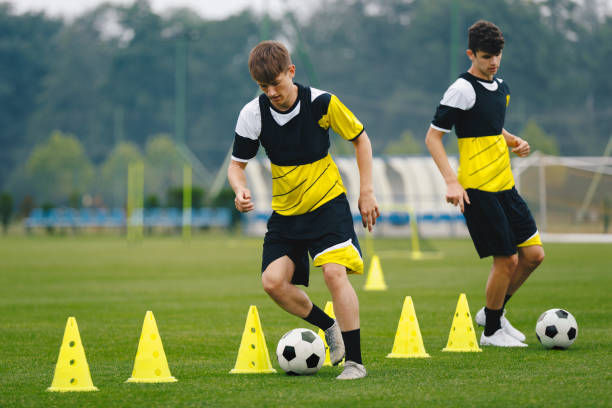Specific Strength - How to improve on the gym what really matter in football
- Krystian Buszta

- May 31, 2023
- 2 min read
Updated: Sep 19, 2023
Many coaches focus on strength, speed, or endurance training. Unfortunately, in soccer, improving strength by 5 (N), speed by 0.03 (S), or VO2max endurance has little translation to player performance in a match.
The application of strength on the field differs from strength training with weights. According to research, muscle activation during weightlifting with a 100kg load is different from muscle activation during acceleration on the field. This means that even if a player can lift a significant amount of weight, they may not be able to activate their muscles effectively on the field to generate the required force, especially due to intramuscular coordination. Accelerations, decelerations, change of direction, jumps, and strikes often occur in unstable, atypical positions, with support on one leg, and so on. These elements are not typically addressed in traditional strength training programs.
It has been suggested that traditional resistance training tasks are too static and contradictory to the natural complex open system of team sports, which demands the self-organization of the large amount of degrees of freedom involved in the interaction between the environment and the dynamics of players’ decisions and actions. Therefore developing the ability to perform stable actions, i.e., the capacity to accelerate and decelerate. Under complex scenarios involving attuning interpersonal coordination. as well as equipment and pitch space control in decision making is very challenging but imperative at high levels of competition.
What specific aspects can you improve by working on specific strength?
In our work, we use inertial devices that allow us to work on many levels of approximation. This allows both the improvement of strength parameters as well as the improvement of coordination parameters increasing the player's ability to adapt.
A) Locomotor Skills
Acceleration
Deceleration
Change of direction
Strength for duels (defensive phase, aerial duels, ball protection)
Strength for striking the ball
Jumping power (aerial duels, goalkeeping saves)
B) Adaptability Skills
Being able to apply force in unexpected stimuli (dribbling)
Being able to apply force in unexpected situations (push from behind)
Expand movement repertoire
Improve strength without sacrificing coordination, ball touch, agility
(1).Travassos, B., Araújo, D., Vilar, L., and Mcgarry, T. (2011). Human Movement Science Interpersonal coordination and ball dynamics in futsal (indoor football). Hum. Mov. Sci. 30, 1245–1259. doi: 10.1016/j.humov.2011.04.003
(2) Buszta K. (2021) Autoorganizacja Proces Treningowy z Perspektywy Nauk o Kompleksowości. Futvalley
(3) F. Seirullo (2017) El entrenamiento estructurado en deportes de equipo. Mastercede




Comments